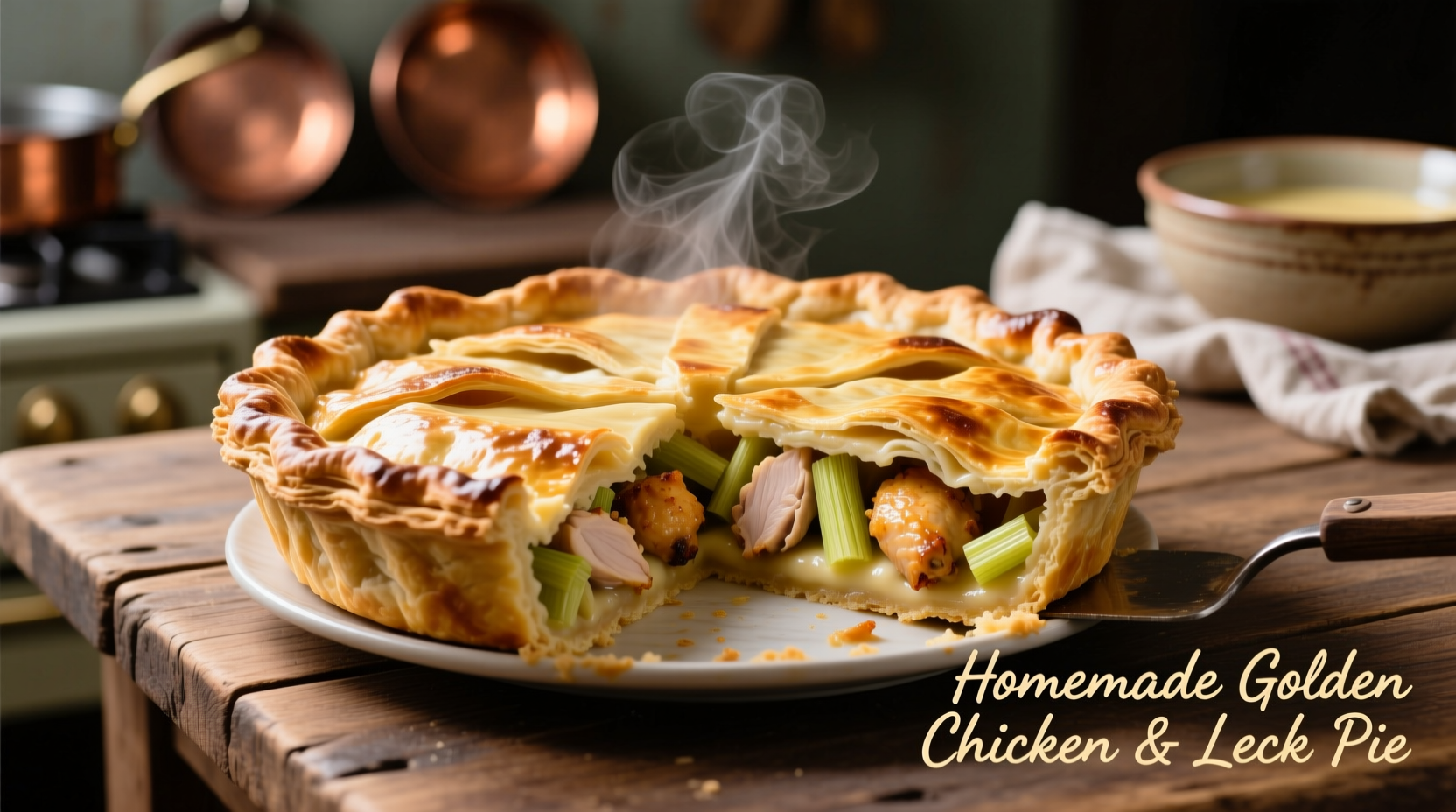The Timeless Appeal of Chicken and Leek
For centuries, European kitchens have celebrated the natural synergy between tender chicken and mild leeks. Unlike sharper onions, leeks offer a delicate sweetness that complements poultry without overwhelming its delicate flavor. This pairing works because leeks contain sulfur compounds that enhance umami perception while chicken provides glutamates that amplify the leeks' natural sugars—a perfect example of flavor layering that creates something greater than the sum of its parts.
Selecting Your Ingredients for Maximum Flavor
Not all leeks are created equal. Understanding the subtle differences between varieties ensures your dish achieves professional results. The following comparison helps you choose the right leeks for your preparation:
| Leek Variety | Flavor Profile | Best Cooking Method | Ideal Dish Application |
|---|---|---|---|
| King Richard | Mild, sweet, buttery | Slow sautéing | Classic potage, delicate sauces |
| Lincoln | Robust, slightly peppery | Long braising | Hearty casseroles, winter stews |
| Jolant | Balanced, versatile | All methods | Chicken and leek pie, quiches |
The Evolution of a Classic Pairing
Chicken and leek's journey through culinary history reveals why this combination has endured. Historical records from medieval Europe show leeks were among the first vegetables cultivated alongside poultry. By the 17th century, French chefs had perfected the technique of slowly cooking leeks in butter before adding chicken—a method documented in François Pierre La Varenne's Le Cuisinier François (1651), considered the first true French cookbook. The Industrial Revolution made this pairing accessible beyond aristocratic tables, as urban workers sought affordable, nourishing meals. Today, modern food science confirms what generations of cooks discovered intuitively: the Maillard reaction between chicken proteins and leek sugars creates complex flavor compounds that satisfy our innate preference for umami-rich combinations.
Mastering the Cooking Process: A Step-by-Step Guide
Preparation Essentials
Proper cleaning is non-negotiable with leeks—they often harbor soil between layers. Slice off roots and dark green tops (reserve for stock), then split lengthwise and rinse thoroughly under cold water, separating layers to remove all grit. Pat completely dry before cooking to ensure proper browning.
The Flavor Foundation Technique
Begin by slicing leeks into uniform half-moons (¼-inch thick). Heat 2 tablespoons of butter in a heavy skillet over medium-low heat—never rush this step. Add leeks with a pinch of sea salt and cook slowly for 15-20 minutes, stirring occasionally, until they become translucent and sweet but not browned. This gentle cooking develops flavor without bitterness. Only then should you add diced chicken thighs (preferable to breasts for their fat content), cooking until the meat reaches 165°F internal temperature.
Avoiding Common Pitfalls
Many home cooks make critical errors that compromise this classic pairing. High heat causes leeks to burn before chicken cooks through, while insufficient salting prevents proper flavor development. Never add liquid immediately after combining ingredients—allow the fond (browned bits) to form for 2-3 minutes before deglazing with quality chicken stock. For cream-based preparations, add dairy only after removing from direct heat to prevent curdling. These context-specific techniques separate exceptional dishes from mediocre attempts.
Perfecting Your Signature Dish
For an unforgettable chicken and leek pie, follow this professional sequence: First, create your filling using the slow-cooking method described. While it cools, prepare a rich pastry by combining 2 cups flour, 1 cup cold butter, and ¼ teaspoon salt. Roll two-thirds into a bottom crust, line your dish, add cooled filling, then cover with the remaining pastry. Brush with egg wash and bake at 375°F until golden (35-40 minutes). The critical finishing touch? Rest for 15 minutes before serving—this allows the filling to set properly.

Nutritional Harmony in Every Bite
Beyond exceptional flavor, this pairing offers balanced nutrition. A standard serving (1½ cups) of properly prepared chicken and leek soup contains approximately 220 calories, with 18g protein from the chicken and valuable vitamins K and A from the leeks. The natural fiber in leeks slows carbohydrate absorption, creating a more stable blood sugar response than many other comfort foods. When prepared with minimal added fat, this classic combination delivers satisfying richness without excessive calories—a nutritional profile that explains its enduring popularity across generations.
Adapting the Classic for Modern Kitchens
Contemporary variations maintain the essence while accommodating different dietary needs. For gluten-free versions, use cornstarch instead of flour for thickening. Those watching sodium can achieve depth of flavor through extended reduction of homemade stock rather than added salt. The classic French potage parmentier transforms beautifully into a dairy-free option when using coconut milk instead of cream, while maintaining the essential flavor balance. Remember that the core principle remains unchanged: slow development of the leek's natural sweetness creates the foundation for everything that follows.











 浙公网安备
33010002000092号
浙公网安备
33010002000092号 浙B2-20120091-4
浙B2-20120091-4